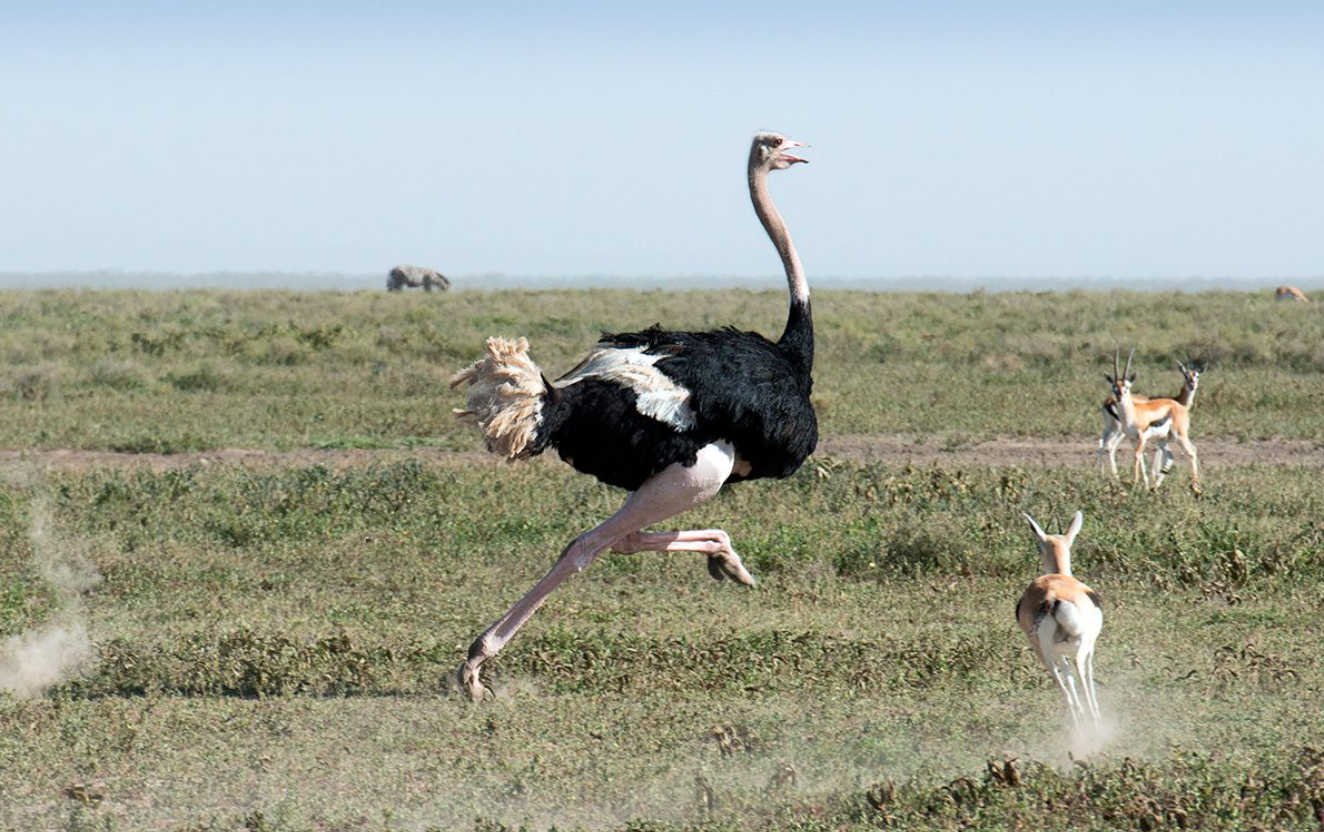Fastest Running Bird: Racing with the Wind
While ostriches may not fly, they are unmatched in speed on land, making them the fastest-running birds globally.
Scientists have observed ostriches running continuously at speeds ranging from 30 to 37 mph, with the ability to sprint up to 43 mph.

How fast is an ostrich?
Ostriches, unable to fly, reign as the fastest-running birds globally, with unmatched land speeds.
Scientists have observed these creatures maintaining speeds of 30-37 mph and sprinting up to 43 mph.
Their long, robust legs allow them to cover over 10 feet in a single stride.
These legs, resembling springs, provide cushioning and shock absorption, aiding in their forward propulsion.
The unique speed and anatomy of ostriches have inspired scientists to design mechanical robot feet modeled after them.
Why can’t an ostrich fly?
Ostriches, despite their size, possess small wings unsuitable for flight and a flattened sternum (breastbone).
In flying birds, the sternum is keel-shaped, akin to the hull of a ship, with powerful wing muscles attached to it.
This keel bone is crucial for takeoff, meaning ostriches, lacking this adaptation, are unable to fly.
How big is an ostrich egg?

An average ostrich egg weighs around 3 pounds, which is approximately the weight of two dozen chicken eggs, and is about 6 inches long.
In the wild, ostrich nests are communal, with several ostriches laying their eggs in the same nest.
Subsequently, one male and one female take turns incubating the eggs.
Ostrich vs. emu. What’s the difference?
Emus and ostriches belong to a group of flightless birds known as ratites, which also include rheas, cassowaries, kiwis, and a few extinct species.
Ratites likely share a common ancestor, possibly even one that could fly.
Distinguishing between ostriches and emus is relatively simple once you know what to look for.
Emus, found in Australia, are smaller than ostriches and have three toes on each foot, whereas ostriches have only two.
Additionally, emus have full feathers on their necks, while ostriches have only a fine layer of wispy feathers, making their heads and necks appear bare.
Does an ostrich bury its head in the sand?
No, that is a common misconception! Ostriches do not bury their heads in the sand.
Instead, they dig nests in the ground and may sometimes poke their heads in to check on or move their eggs.
Additionally, when sensing danger, ostriches may lie down low and press their long necks to the ground to become less visible.
These behaviors have mistakenly led to the myth that ostriches bury their heads in the sand.
What do ostriches eat?
Ostriches are primarily herbivores, feeding on plants such as leafy greens, flowering plants, roots, grasses, and succulents.
They may also consume fallen fruit and occasionally snack on small animals like mice, frogs, and insects, including grasshoppers and locusts.
At the Smithsonian’s National Zoo, ostriches are fed a diet that includes produce, insects, and pellets fortified with vitamins and nutrients.
Their favorite foods often include leafy greens like romaine, kale, and collards.
If impressive follow for more on our blog page as sampled below:
- Speed Demon Nuts: Exploring the Fastest Varieties
- In Pursuit of Speed: Exploring the Fastest Shoes for Runners
- Breaking the Sound Barrier: The Fastest Dogs in the Canine Kingdom
- Rapid Canopy Growth: Best Options for Fastest Growing Shade Trees
What bird is faster ostrich or roadrunner?
The Greater Roadrunner, found in the deserts of North America, is known to run at speeds of up to 42 km/h.
However, the title of the fastest-running bird belongs to the Common Ostrich, which can reach impressive speeds of up to 70 km/h.
What is the fastest animal on earth?
The peregrine falcon holds the title of the fastest bird and the fastest member of the animal kingdom, capable of diving at speeds exceeding 300 km/h (190 mph).
On land, the cheetah takes the crown as the fastest land animal.
In the sea, the black marlin is considered one of the fastest animals, although there are conflicting reports and uncertainties regarding its recorded speeds.